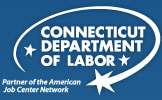| Go Back to List |
|
Perform precision assembling, adjusting, or calibrating, within narrow tolerances, of timing devices such as digital clocks or timing devices with electrical or electronic components. |
|
|
|
| |
Assemble and install components of timepieces to complete mechanisms, using watchmakers' tools and loupes. |
| |
Observe operation of timepiece parts and subassemblies to determine accuracy of movement, and to diagnose causes of defects. |
| |
Test operation and fit of timepiece parts and subassemblies, using electronic testing equipment, tweezers, watchmakers' tools, and loupes. |
| |
Replace specified parts to repair malfunctioning timepieces, using watchmakers' tools, loupes, and holding fixtures. |
| |
Disassemble timepieces such as watches, clocks, and chronometers so that repairs can be made. |
| |
Clean and lubricate timepiece parts and assemblies, using solvents, buff sticks, and oil. |
| |
Examine components of timepieces such as watches, clocks, or chronometers for defects, using loupes or microscopes. |
| |
Bend parts, such as hairsprings, pallets, barrel covers, and bridges, to correct deficiencies in truing or endshake, using tweezers. |
| |
Change timing weights on balance wheels to correct deficient timing. |
| |
Adjust sizes or positioning of timepiece parts to achieve specified fit or function, using calipers, fixtures, and loupes. |
| |
Repairing - Repairing machines or systems using the needed tools. |
| |
Quality Control Analysis - Conducting tests and inspections of products, services, or processes to evaluate quality or performance. |
| |
Troubleshooting - Determining causes of operating errors and deciding what to do about it. |
| |
Operation Monitoring - Watching gauges, dials, or other indicators to make sure a machine is working properly. |
| |
Active Listening - Giving full attention to what other people are saying, taking time to understand the points being made, asking questions as appropriate, and not interrupting at inappropriate times. |
| |
Monitoring - Monitoring/Assessing performance of yourself, other individuals, or organizations to make improvements or take corrective action. |
| |
Critical Thinking - Using logic and reasoning to identify the strengths and weaknesses of alternative solutions, conclusions or approaches to problems. |
| |
Reading Comprehension - Understanding written sentences and paragraphs in work related documents. |
| |
Complex Problem Solving - Identifying complex problems and reviewing related information to develop and evaluate options and implement solutions. |
| |
Social Perceptiveness - Being aware of others' reactions and understanding why they react as they do. |
| |
Mechanical - Knowledge of machines and tools, including their designs, uses, repair, and maintenance. |
| |
Mathematics - Knowledge of arithmetic, algebra, geometry, calculus, statistics, and their applications. |
| |
Production and Processing - Knowledge of raw materials, production processes, quality control, costs, and other techniques for maximizing the effective manufacture and distribution of goods. |
| |
Engineering and Technology - Knowledge of the practical application of engineering science and technology. This includes applying principles, techniques, procedures, and equipment to the design and production of various goods and services. |
| |
Education and Training - Knowledge of principles and methods for curriculum and training design, teaching and instruction for individuals and groups, and the measurement of training effects. |
| |
Customer and Personal Service - Knowledge of principles and processes for providing customer and personal services. This includes customer needs assessment, meeting quality standards for services, and evaluation of customer satisfaction. |
| |
Computers and Electronics - Knowledge of circuit boards, processors, chips, electronic equipment, and computer hardware and software, including applications and programming. |
| |
Administration and Management - Knowledge of business and management principles involved in strategic planning, resource allocation, human resources modeling, leadership technique, production methods, and coordination of people and resources. |
| |
Physics - Knowledge and prediction of physical principles, laws, their interrelationships, and applications to understanding fluid, material, and atmospheric dynamics, and mechanical, electrical, atomic and sub- atomic structures and processes. |
| |
English Language - Knowledge of the structure and content of the English language including the meaning and spelling of words, rules of composition, and grammar. |
 |
| |
(Please note that some searches may not produce any results.) |
|
|
|
|
| |
|
These occupations usually require a high school diploma.
|
| |
|
Some previous work-related skill, knowledge, or experience is usually needed. For example, a teller would benefit from experience working directly with the public.
|
|
|
|
|



